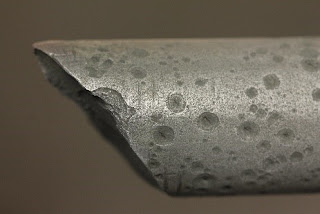Different Applications for Artificial Lift
An artificial
lift is used to lower the bottom hole pressure (BHP) and raise production in a
liquid well. Positive-displacement pumps, like progressive cavity pumps (PCP)
or beam (sucker-rod) pumps are used to enhance production by lowering intake
pressure. However, centrifugal pumps can perform this same job, expect with an
electrical submersible pump (ESP) system. Other artificial lifts include: jet
hydraulic and reciprocating pumps and plunger lifts. Many oil wells and gas
wells will need an artificial lift to increase liquid production, but these
lifts have many more applications. Below is a few examples of artificial lift
applications.
Deep Water Oil Pumping
Deep water oil
pumping would only be mildly successful without an artificial lift or subsea
lift system. Lifts and flow boosting systems can be a major part of deep water
oil production and essential for making an oil drilling project commercially
viable. There are two artificial lifts that are perfect for this job: the
subsea multiphase boosting pumps and electrical submersible pumps (ESPs).
However, it’s best to choose a pumping approach that accounts for
infrastructure, reservoir and environmental factors. Gas lifts can be combined
with these systems and used in demanding deep-water conditions, such as on
caissons and the seafloor.
Bitumen Production
As the demand for
energy increases, so does the demand for hydrocarbons like bitumen or heavy
oil. Because bitumen doesn’t flow freely, this also means an increase in a
production process that’s already slow, expensive and arduous. This is where
artificial lift systems come in. Bitumen is recovered from oils sands via
mining, but not all these deposits can be mined. So, thermal recovery
techniques must be employed. Thermal recovery techniques include: cyclic steam
stimulation (CSS), steam-assisted gravity drainage (SAGD) and steam flooding –
all made possible with a high-temperature ESP system. In every method, the high
temperature reduces the oil’s viscosity and allow it to flow faster. High
temperature ESP systems have and will continue to improve heavy oil production
techniques
Removing Liquid from Gas Wells
Generally, gas
wells don’t need the assistance of an artificial lift. However, these wells can
produce liquids (liquid loading); mostly water, that can accumulate in the well
bore, increase pressure (back pressure), limit gas recovery, and block or
inhibit gas flow. An artificial lift is needed to continuously remove liquid
and maximize inflow and outflow in gas wells. This lift essentially reverses liquid
loading by lowering the bottom-hole pressure (BHP). Reverse liquid loading is
essential in aging reservoirs, as pressure in gas wells declines with age, thus
allowing more liquid accumulation. So, artificial lift methods are used to
remove this liquid, including progressive cavity pumping using a PCP pump,
sucker rod pumping using a carbon rod,
electrical submersible pumping and hydraulic pumping.

Comments
Post a Comment